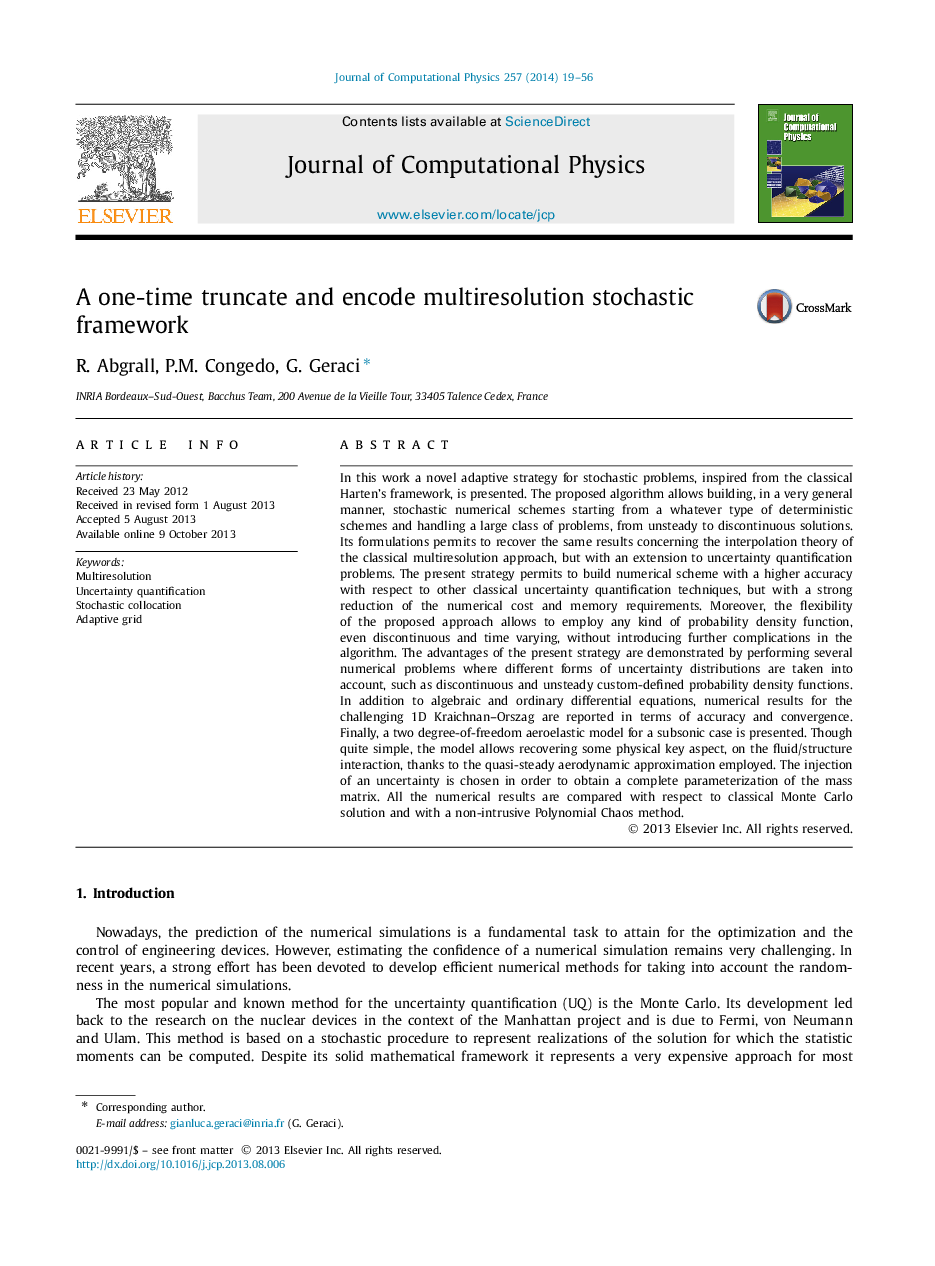| Article ID | Journal | Published Year | Pages | File Type |
|---|---|---|---|---|
| 10355967 | Journal of Computational Physics | 2014 | 38 Pages |
Abstract
In this work a novel adaptive strategy for stochastic problems, inspired from the classical Hartenʼs framework, is presented. The proposed algorithm allows building, in a very general manner, stochastic numerical schemes starting from a whatever type of deterministic schemes and handling a large class of problems, from unsteady to discontinuous solutions. Its formulations permits to recover the same results concerning the interpolation theory of the classical multiresolution approach, but with an extension to uncertainty quantification problems. The present strategy permits to build numerical scheme with a higher accuracy with respect to other classical uncertainty quantification techniques, but with a strong reduction of the numerical cost and memory requirements. Moreover, the flexibility of the proposed approach allows to employ any kind of probability density function, even discontinuous and time varying, without introducing further complications in the algorithm. The advantages of the present strategy are demonstrated by performing several numerical problems where different forms of uncertainty distributions are taken into account, such as discontinuous and unsteady custom-defined probability density functions. In addition to algebraic and ordinary differential equations, numerical results for the challenging 1D Kraichnan-Orszag are reported in terms of accuracy and convergence. Finally, a two degree-of-freedom aeroelastic model for a subsonic case is presented. Though quite simple, the model allows recovering some physical key aspect, on the fluid/structure interaction, thanks to the quasi-steady aerodynamic approximation employed. The injection of an uncertainty is chosen in order to obtain a complete parameterization of the mass matrix. All the numerical results are compared with respect to classical Monte Carlo solution and with a non-intrusive Polynomial Chaos method.
Related Topics
Physical Sciences and Engineering
Computer Science
Computer Science Applications
Authors
R. Abgrall, P.M. Congedo, G. Geraci,
